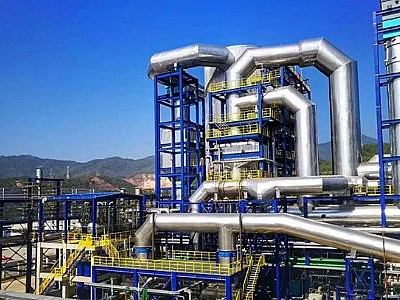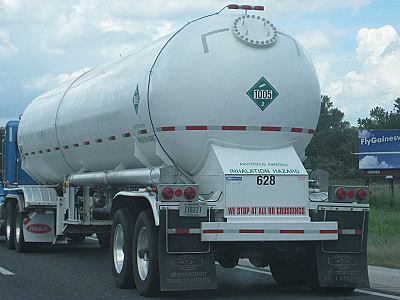Understanding the Opportunities of Insurance in Indonesia
An overview of the current trends within Indonesia's insurance industry.



Sulfuric acid is a very important commodity chemical, and also a key substance in the chemical industry with a wide range of applications. It is considered that a nation's sulfuric acid production is a good indicator of its industrial strength, but producing and processing sulfuric acid is not as simple as it may seem.
Our metallurgist Advisor was able to share insights on processing sulfuric acid. Keep on reading to know more from our expert network Indonesia!
Mr. AR elaborated that the raw materials for sulfuric acid comes from either solid sulfur in the form of granular material or sulfur dioxide gas, the latter of which is derived from the waste of other factories. If sulfuric acid is made from solid materials, a melting unit and a burning unit will be needed to melt the granular materials into liquid and then to burn the liquid with oxygen which will transform the matter into sulfur dioxide gas. Sulfur dioxide is then processed into a converter, combining the gas with oxygen and vanadium pentoxide, and the sulfur dioxide will become sulfur trioxide. The sulfur trioxide is finally added to an absorption tower, which will result in H2SO4 or also known as sulfuric acid. Besides sulfuric acid, this process also generates an additional product: steam, which can be used to generate electricity.
The technology, Mr. AR explained, is differentiated by the types of contact and absorption. Types of contact refer to how sulfur dioxide is contacted with oxygen and vanadium pentoxide in the converter, and types of absorption are related to the absorption tower.
There are several technologies for processing sulfuric acid, such as single contact, single absorption, as well as single contact, double absorption. The two technologies are distinct in the number of absorption towers needed to process sulfuric acid, with the latter—single contact, double absorption—being more expensive because more absorption towers are required. In single absorption, SO3 or sulfur trioxide is produced. It is a dangerous chemical for the environment and its output is limited due to that reason. Equipment called a scrubber is essential so that the sulfur trioxide vapor is not released to the environment. Instead, the vapor will be flushed with water and it will become a sulfuric acid with a lower rate that can be used for other purposes.
Mr. AR shared that there are needs for steam, which is an additional product that results from processing sulfuric acid, and the need for steam is caused by the rising price of coal. Besides that, the steam can be utilized to generate electricity. It can be concluded that it makes more sense from an economical perspective to build a sulfuric acid plant rather than a coal plant.
Mr. AR talked about how it is possible for sulfuric acid to be processed from copper smelters. In this case, there are no melting unit and burning unit, because the copper is burned at a high temperature, and the sulfur contained in the copper will turn into gas, so there is no need to melt and burn the sulfur first. The sulfur dioxide from burning the copper is then inserted to a converter and absorption power.
Despite it being possible, Mr. AR added that it needs to be analyzed how much sulfur dioxide is produced by using this method. If it isn’t much and the result of sulfuric acid is not utilized, then it will be a waste to do all of that.
Contact us to explore more about the current trends of the logistic industry and be connected with our expert network.
Subscribe to our newsletter, and stay updated with the latest insights on various industries.
About Mr. AR:
Mr. AR currently leads a detailed engineering design team to construct an efficient nickel commercial plant to produce high grade nickel sulfate. To ensure a 5000 ton per year production, Mr. AR has developed Hazard Process Flow chart (HAZOP), Block Flow Diagram (BFD), Process Flow Diagrams (PFD), and Control Philosophy for the company’s nickel hydrometallurgy plant.
During his previous role as a Crew Lead Metallurgist at an Indonesian owned mining company located in Southeast Sulawesi, Mr. AR and his team were responsible for demo plant operation, including agglomeration, iron neutralization unit, and wastewater treatment. On top of that, he also developed an ion exchange system for the company’s commercial plant in order to produce high grade nickel solution while ensuring a high recovery.
As an expert in the ion exchange process of nickel and experienced Metallurgist, consulting with Mr. AR will give your business valuable information on nickel processing and sulfuric acid plant projects, which include details on heap leach process and how to produce high grade nickel with the best possible cost.
We will give you updates of our latest news
An overview of the current trends within Indonesia's insurance industry.

One of Askpert's advisors had the opportunity to share his insights about the expedition industry.

Ammonia is one of the new green energy technologies to curb emissions. Mr. DF, a specialist in the ammonia manufacturing sector, provided us with insights into the expansion of the ammonia industry in Indonesia.

Our advisor shares insights on how ecommerce enablers have been helping brands in Indonesia.
